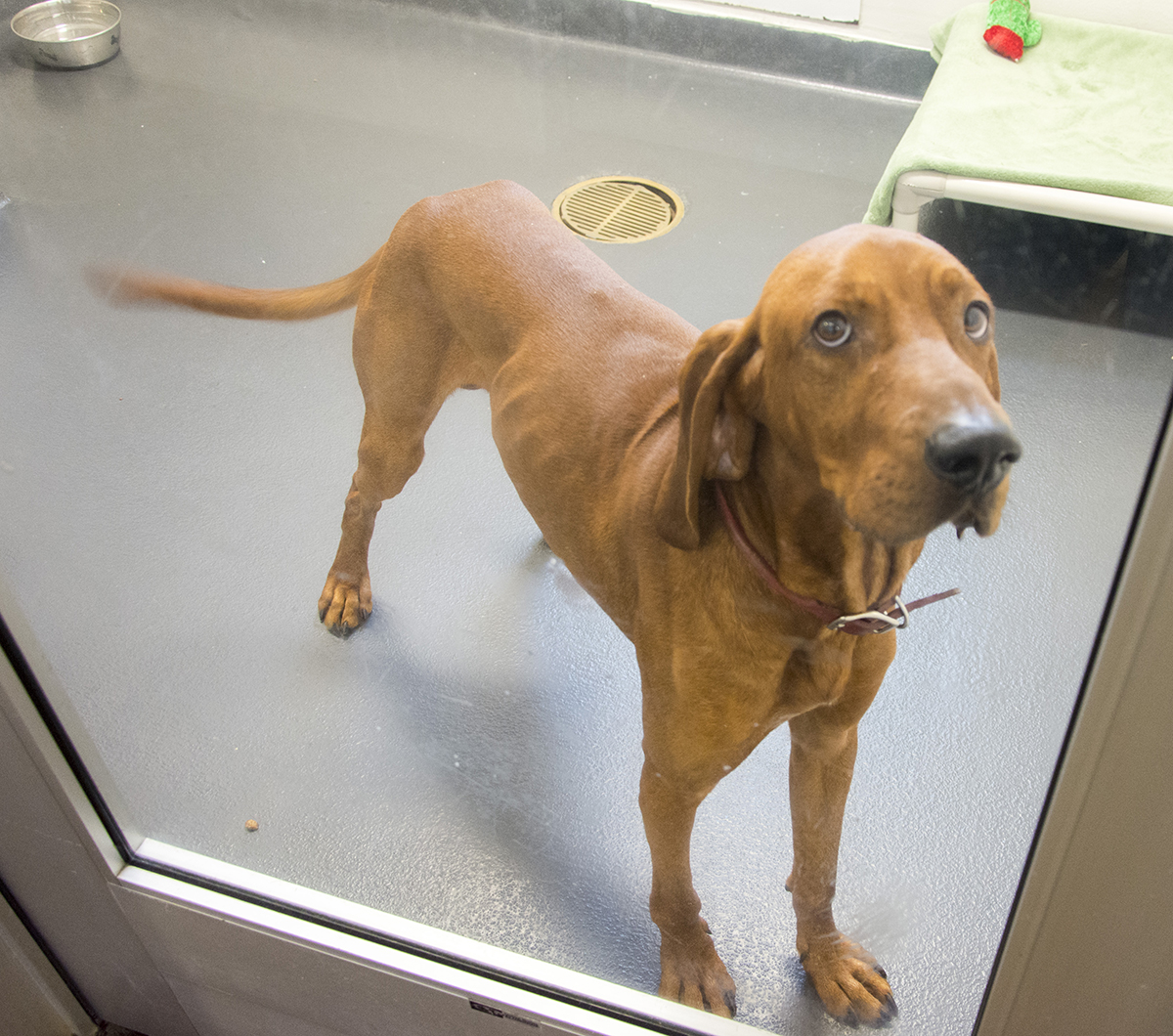Shelter Medicine plays vital role in Newfield hoarding case
 A couple in Newfield, NY is facing 62 charges after a number of animals were seized from their trailer in November 2015. Tompkins County SPCA officers called it one of the worst animal hoarding cases they had ever seen: 28 animals, and three that had already died, crowded into a filthy single-wide trailer.
A couple in Newfield, NY is facing 62 charges after a number of animals were seized from their trailer in November 2015. Tompkins County SPCA officers called it one of the worst animal hoarding cases they had ever seen: 28 animals, and three that had already died, crowded into a filthy single-wide trailer.
The Humane Society of the United States estimates roughly 250,000 animals are victims of hoarding each year. Veterinarians, veterinary students and animal shelter staff are among the first to respond to a hoarding case, providing investigative and triage services on site.
Dr. Elizabeth Berliner, the Janet L. Swanson Director of Shelter Medicine at Cornell’s College of Veterinary Medicine, was a first responder in the Newfield case. Berliner has seen roughly a dozen hoarding cases, with patients frequently suffering from skin disease, overgrown nails, skin and intestinal parasites, respiratory diseases, starvation, and emaciation. The good news is that these conditions, while serious, usually respond to basic husbandry and adequate nutrition. The health of rescued animals can improve dramatically in a week once they’re removed from the hoarding situation.
The bad news is that curing animal hoarders from the drive to collect pets is not so easy. “Recidivism in animal hoarding approaches 100 percent,” says Berliner. “The rare success story only occurs when there has been a team providing long-term support.” Almost 100 animals, some of them dead, were seized from the Newfield couple’s one-bedroom trailer five years ago. Records show that the only available food and water in that case was a half cup of moldy dog food and a quarter cup of water.
“True animal hoarders do not recognize that they’re failing to provide adequate care,” says Berliner. “They may not even recognize death.”
Animal hoarders typically fall under three categories: rescue hoarders, exploiter hoarders and overwhelmed caregivers. Rescue hoarders try to help animals in need, but take in more than they can handle. Exploiter hoarders collect pets for breeding and selling. In both scenarios, “Something flips,” says Berliner. “They lose control of the situation, but fail to identify that fact.” An overwhelmed caregiver, on the other hand, will recognize that they need help, and will often ask for assistance. “But in all of these situations, you end up with animals that are suffering,” Berliner says.
When a suspected case of hoarding is reported, authorities have to proceed with caution. “We don’t go rushing in, even though that is always what people want to do,” she says. “You need to create a plan, because you may find a hundred animals in various medical and emotional states. You need to be able to provide a systematic and humane approach to managing their health and welfare while protecting yourself and your staff from injury.”
The plan must include provisions for the hoarders themselves, says Berliner. “It takes a full set of social services to intervene. It’s not just about getting the animals out, it’s about finding adequate housing, it’s about the mental health of the owner, getting those supportive services … Without intense, multi-agency activity, it will happen again.”
Tompkins County has a hoarding task force, but many communities are not as well-prepared. Some animal shelters may not have a resident veterinarians to treat hoarding patients. In these scenarios, a national response team comprising volunteer veterinarians is deployed to the area. Berliner and many Cornell students are on this team, and members receive calls for help roughly once a month.

Locally, when the Tompkins County SPCA rescues hoarded animals, Berliner and the other Cornell shelter medicine veterinarians and students are on-call to triage and treat the pets. Berliner notes that this collaboration is particularly impactful for the students. “They get the benefit of training and mentorship in such a situation, and are better trained to intervene and help in future situations,” she says. “By watching mentors go through the process, they recognize the need for a systematic response by which you alert all the right people, and remember that you can ask for help. It takes a team, and we are fortunate to have this collaboration between the college and the SPCA in our community.”




